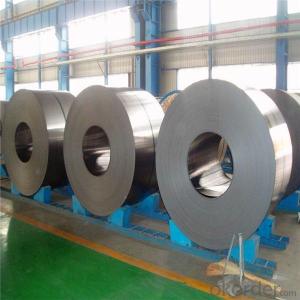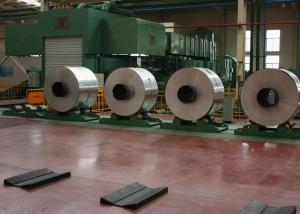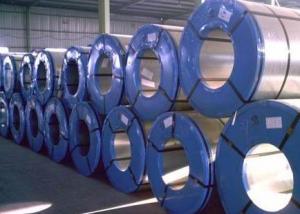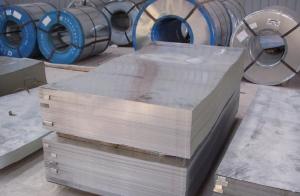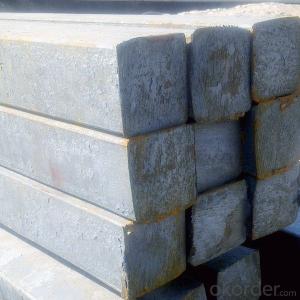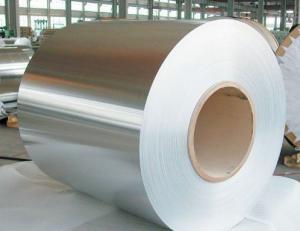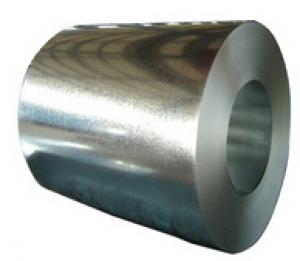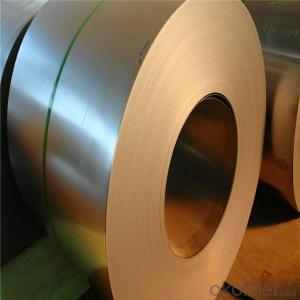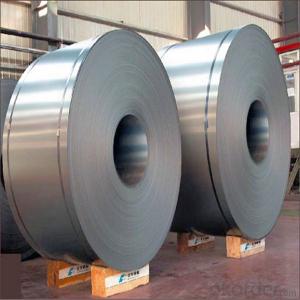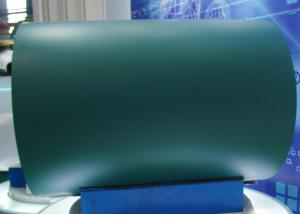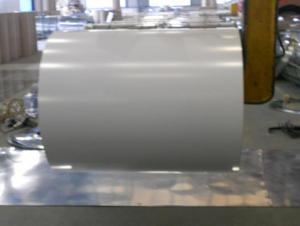High Quality Surface Finish Cold Rolled Steel Made in China
- Loading Port:
- China main port
- Payment Terms:
- TT OR LC
- Min Order Qty:
- 23 m.t.
- Supply Capability:
- 50000 m.t./month
OKorder Service Pledge
OKorder Financial Service
You Might Also Like
Specification
Prime Quality SPCC Cold Rolled Steel Sheet/Coil
Widely used to appliance,automobile industry or other decoration usage.
Certificate: ISO9001
Packing Details: Wrapped by water proof paper and plastic film.Covered with iron sheet,strapped by steel strips to protect the damage under transportation.
Details please check following format
Brief Introduction
Cold rolled steel coil is steel that has been worked below its recrystallization temperature by passing it between a pair of rollers. Recrystallization temperature is the temperature at which grains in the lattice structure of the metal have been rearranged, leaving it free of strain and deformations. Cold rolled steel coil is pre-treated before being cold rolled with a process known as pickling, which uses strong acids to remove scale and other impurities. The cold rolled steel coil is then passed through rollers to reduce its thickness. Most cold rolling takes place in multiple passes and as the size of the cold rolled steel coil is further reduced, its strength and hardness both increase, but its ductility decreases. After cold rolling, heating the metal up in a process known as annealing can restore some of its ductility. The final cold rolled steel coil may be manufactured in the form of sheets, strips, bars, or other forms.
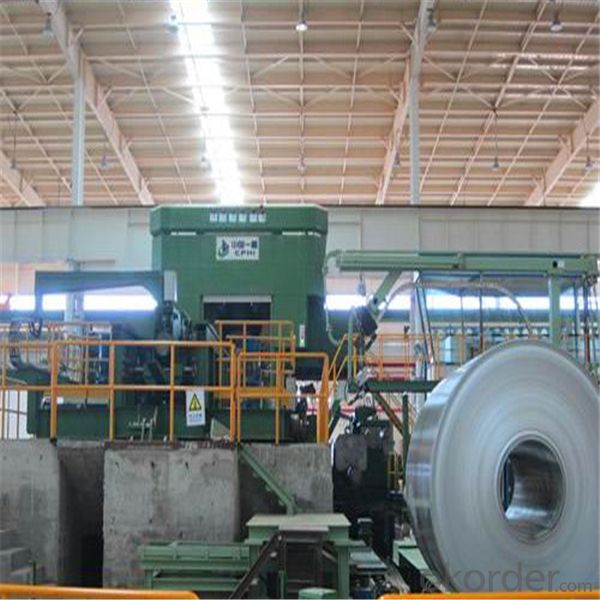
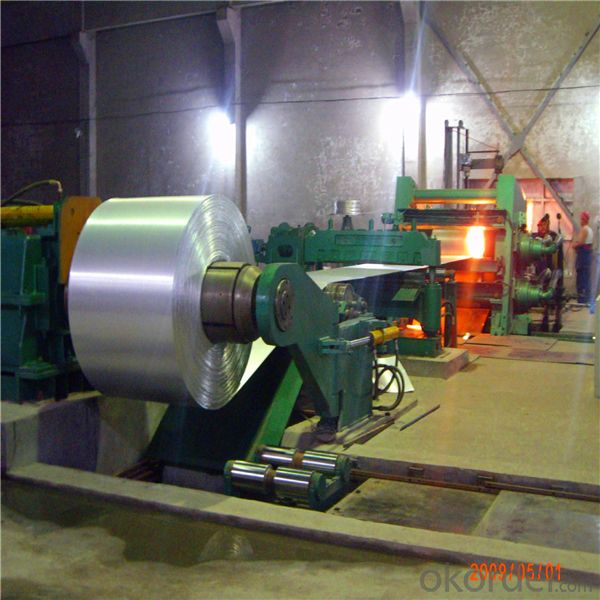

Specification
1. Thickness: 0.4-2.0mm
2. Width: 900-1250mm
3. Inner Diameter: 508mm
4. Weight of Steel Coil: 3-15MT
5. Heat Treatment: Annealed
6. Margin Status: EC & EM
7. Surface Quality: FB&FC
8. Surface Status: SB & SD
9. Surface Treatment: Oiling
Mechanical Properties
1. Yield Strength: ≤320MPa
2. Tensile Strength: ≤370MPa
3. Elongation (L=50mm, b=25mm) When:
(1) Nominal Thickness<0.25mm: 30%
(2) Nominal Thickness 0.25mm-<0.40: 32%
(3) Nominal Thickness 0.40-<0.60mm: 34%
(4) Nominal Thickness 0.60-<1.0mm: 36%
(5) Nominal Thickness 1.0-<1.6mm: 37%
(6) Nominal Thickness >1.6mm: 38%
- Q: What are the different types of steel tanks and their applications in the pharmaceutical industry?
- There are several types of steel tanks used in the pharmaceutical industry, including stainless steel tanks and carbon steel tanks. Stainless steel tanks are widely used due to their corrosion resistance and hygienic properties, making them suitable for storage and processing of pharmaceutical ingredients, chemicals, and sterile solutions. These tanks are commonly used for mixing, blending, and storing various pharmaceutical products. On the other hand, carbon steel tanks are often employed for non-sterile applications such as bulk storage of raw materials, solvents, and non-critical liquids. These tanks are less expensive compared to stainless steel tanks but may require additional coatings or linings to prevent corrosion and maintain product integrity.
- Q: How is steel used in the construction of theme parks and recreational facilities?
- Steel is used in the construction of theme parks and recreational facilities for various purposes, such as the creation of structural supports, roller coasters, rides, and other attractions. It provides strength and durability, allowing for the construction of large and intricate structures, ensuring the safety and enjoyment of visitors. Additionally, steel is also used in the fabrication of fencing, gates, and other components, contributing to the overall aesthetics and functionality of these facilities.
- Q: How is steel used in the construction of industrial buildings and warehouses?
- Steel is commonly used in the construction of industrial buildings and warehouses due to its strength and durability. It is used to create structural components such as beams, columns, and frames, providing a sturdy framework that can support heavy loads and withstand harsh conditions. Additionally, steel is often used for roofing and cladding materials, offering protection against weather elements and ensuring long-term durability. Its versatility allows for efficient construction and customization, making it a popular choice in industrial building and warehouse projects.
- Q: What are the different types of steel sheet and their uses?
- There are several types of steel sheets available, each with distinct properties and uses. Some common types include hot-rolled steel, cold-rolled steel, galvanized steel, and stainless steel. Hot-rolled steel sheets are often used in construction and manufacturing due to their strength and durability. Cold-rolled steel sheets, on the other hand, are smoother and have tighter tolerances, making them suitable for applications requiring precise dimensions. Galvanized steel sheets have a protective zinc coating, making them resistant to corrosion, and are commonly used in outdoor structures or for automotive parts. Stainless steel sheets are known for their resistance to corrosion and high temperature, making them ideal for applications in food processing, medical equipment, and chemical industries. Overall, the choice of steel sheet type depends on the specific requirements and intended use of the product.
- Q: How is steel used in the transportation industry?
- Steel is used extensively in the transportation industry for various applications such as building vehicles, manufacturing railway tracks, constructing bridges, and designing infrastructure. It provides strength, durability, and impact resistance, making it an ideal material for ensuring the safety and reliability of transportation systems.
- Q: How is steel used in the energy sector?
- Steel is used in the energy sector in various ways. It is commonly used in the construction of power plants, wind turbines, and transmission towers due to its strength, durability, and ability to withstand harsh environmental conditions. Steel is also used in the manufacturing of pipelines for transporting oil, natural gas, and other energy resources over long distances. Additionally, steel is utilized in the production of energy storage systems such as batteries and in the construction of energy-efficient buildings.
- Q: How is steel wire rope lubricated for optimal performance?
- Steel wire rope is lubricated for optimal performance by applying a specialized lubricant that penetrates the core and the individual wire strands. This lubricant helps to reduce friction, prevent corrosion, and prolong the life of the rope. It is typically applied through a process called rope dressing or by using a lubrication system that evenly distributes the lubricant along the entire length of the rope. Regular lubrication is essential to maintain the smooth operation and efficiency of the steel wire rope.
- Q: What are the uses of steel in the construction of hotels and resorts?
- Steel is widely used in the construction of hotels and resorts due to its exceptional strength and durability. It serves various purposes such as providing structural support, forming the framework of the building, and reinforcing concrete structures. Steel beams and columns are used to create large open spaces, allowing for flexible and efficient floor plans. Additionally, steel is utilized in the construction of staircases, elevator shafts, and roofing systems. Its fire-resistant properties and ability to withstand extreme weather conditions make it an ideal choice for ensuring the safety and longevity of hotels and resorts.
- Q: What are the different types of steel fasteners and their uses in machinery?
- There are various types of steel fasteners commonly used in machinery, including bolts, screws, nuts, and washers. Bolts are used to join two or more components together, providing strong and reliable connections. Screws, on the other hand, are primarily used to hold components in place or to fasten objects to surfaces. Nuts are paired with bolts to secure them tightly, while washers are used to distribute the load and prevent damage to the connected surfaces. These steel fasteners play a crucial role in ensuring the structural integrity and functionality of machinery.
- Q: What are the different types of steel bolts and their uses in automotive assembly?
- There are several types of steel bolts commonly used in automotive assembly, including hex bolts, flange bolts, carriage bolts, and shoulder bolts. Hex bolts are the most common type and are used for general fastening purposes. Flange bolts have a wider surface area and are designed to provide a secure connection between parts. Carriage bolts have a rounded head and are often used in applications where aesthetics are important. Shoulder bolts have a shoulder between the head and the threaded portion, allowing for precise alignment and controlled movement. Each type of bolt serves a specific purpose in automotive assembly, ensuring the structural integrity and functionality of the vehicle.
Send your message to us
High Quality Surface Finish Cold Rolled Steel Made in China
- Loading Port:
- China main port
- Payment Terms:
- TT OR LC
- Min Order Qty:
- 23 m.t.
- Supply Capability:
- 50000 m.t./month
OKorder Service Pledge
OKorder Financial Service
Similar products
Hot products
Hot Searches
Related keywords
